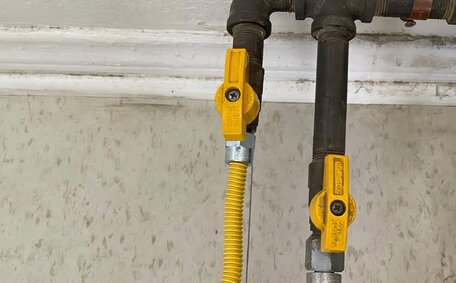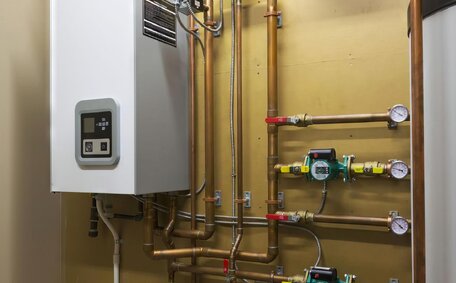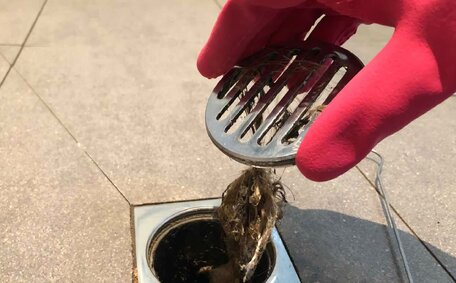Introduction to Safe Gas Cylinder Storage
Effective handling and storage of gas cylinders are critical for preventing accidents and injuries. High-pressure gases, whether toxic, corrosive, or flammable, pose significant safety risks. Improper storage may result in explosions, fires, and gas leaks, threatening health, safety, and property.
We can assist you in adhering to safety legislation and standards for optimal health safety. Please reach out if you need guidance in handling and correctly storing gas cylinders. Crucial elements to consider when establishing a storage area for gas cylinders include:
- Storing upright and securing cylinders safely to prevent falls
- Segregating different types and contents of cylinders using partitions for organisation
- Providing adequate ventilation to disperse leaked gases that may be heavier than air
- Sheltering cylinders from weather elements and temperature extremes
- Ensuring valve protection through diligent practices, keeping valves securely closed when not in use and shielded from harm
- Regularly inspecting cylinders and storage areas
- Proper signage and labelling for cylinder storage
As a leading plumbing company in Jannali, Sydney, let us know your concerns, and Jannali Plumbing will provide expertise to advise on safe storage and handling of gas cylinders in compliance with local regulations. Our expertise lies in national standards, enabling us to assess risks and recommend gas cylinder storage solutions for homes and businesses.
Choosing a Proper Location
When handling the selection of a cylinder storage area for your gas cylinder store in Jannali, key factors to consider include:
- Gas cylinders should never be stored at ground level or underground
- The area must be well ventilated and sheltered
- Cylinders should always be stored at least 20 feet from ignition sources like electrical outlets or operating machinery
- Segregate cylinder storage from combustible materials by a fire-resistant partition
- Protect cylinders from weather and temperature extremes which may compromise valve seals
- Do ensure the space allows for secure upright storage and easy manual handling
- Undertake a risk assessment considering proximity to people and property when handling and storing cylinders
Your chosen storage area must facilitate inspections of gas bottle cages, leakage monitoring, labelling, and emergency access. Our expertise can guide you in selecting a gas cylinder storage location that complies with safety legislation.
Ventilation Requirements
Faulty valves or damaged cylinders can cause gas to accumulate at floor level, so adequate ventilation is essential to prevent hazardous concentrations.
Gas cylinders should only be stored indoors if the space is specifically designed for compressed gas storage and outfitted with proper ventilation systems. Outdoor gas cylinder storage areas must be areas open air to provide proper design for safe handling and storage, with adequate natural airflow to avert accumulation of leaked toxic or flammable substances.
Natural cross ventilation is ideal to disperse heavier-than-air gases and limit explosion risks in the event of leaks.
Keep cylinders at outdoor storage sites located away from buildings and ensure the cargo areas open air on at least two sides. Adhere to safety legislation necessitating specific air changes per hour, tailored for the optimal storage of gas cylinders.
At Jannali Plumbing, we provide advice on use gas cylinder procedures efficiently when designing spaces suitable for their storage and handling. Our gas fitting experts can evaluate your requirements and ensure safe handling of gas through effective procedures, supporting you in developing risk management plans that comply with safety standards.
Securing Gas Cylinders
Gas cylinders must be stored upright and secured to prevent falling or damage during storage and transportation. Australian Standards require much more than just upright positioning; securing methods include the following:
- Chained to a fixed structure, cylinders must stored by anchoring devices
- Held in a carrier designed for cylinder storage and transport
- Housed in racks, cages, or structures that limit movement
Smaller cylinders can be secured in an upright position using straps or fastening bands fixed to a wall or stand. Larger Gas bottles may require a specialised gas bottle cage or equipment like trolleys to move cylinders away from any unsafe areas for safe manual handling.
Cylinders should always be transported and stored firmly secured upright in racks or cages fitted to the vehicles cargo areas open to the air. Open cargo areas must have appropriate restraints to immobilise cylinders, preventing dislodgement. Securing the load is essential to prevent valve damage from shifts during transport.
Our Jannali Plumbing professionals are expertly trained in gas cylinder transport protocols, storing and transporting all cylinder types with the greatest care. We offer advice on the most effective securing methods in line with Australian standards.
Upright and Stable Positioning
Gas cylinders must always be kept in an upright, vertical position to ensure stability and reduce the risk of tipping or falling. Australian Standards require cylinders to be stored upright to ensure their safe and proper use.
Securing cylinders upright can be achieved by:
- Chaining cylinders to a fixed wall or stand
- Placing cylinders in a cage or rack that prevents sideways movement
- Using floor mounts, brackets and straps to immobilise larger cylinders
Valves and collars at the top of your gas cylinder are vulnerable to damage if unsuitable storage handling gas procedures allow the cylinder to tip over. The pressurised gas contents can violently eject through broken valves in an uncontrolled manner.
At Jannali Plumbing, we advise on suitable upright storage methods for gas cylinders that eliminate risks of mechanical damage and unintended release of hazardous contents.
Using Struts and Chains
Struts and chains should serve as means of securing gas cylinders in a vertical position. It’s recommended by Australian Standards to use struts or chains no longer than 1.5 metres to anchor cylinders to a fixed point.
Install solid struts on opposite sides of the cylinder below its centre of gravity. Chains should never be loose and must fasten snugly around the cylinder neck using galvanised or stainless steel grade 80 chain. Allow enough slack for gas line connections while preventing sideways movement.
Best practices include using a single strut or chain for storing small cylinders under 18 kg to mitigate tilting risks. Heavier cylinders require two anchor points to distribute load forces evenly, unlike lighter ones which may need only one. Wall brackets, floor stand assemblies and custom racks also employ integrated struts to stabilise cylinders.
At Jannali Plumbing, our gas fitting technicians advise on suitable struts and chains to securely fasten cylinders stored at your property. We ensure the materials and fasteners properly suit the cylinder types and contents.
Segregating by Hazard Type
During storage, gases in cylinders should be segregated based on their specific hazard classifications: flammable, oxidising, inert, toxic, and corrosive gases, each requiring their dedicated sections.
Australian Standards mandate segregation of cylinder types with specified minimum distances between incompatible gases. For example, flammable gas cylinders must be kept at least 3 metres apart from oxidising gas cylinders. Sturdy fire-resistant partitions extending one metre above and to the sides of stored cylinders can substitute for spatial separation.
Proper segregation eliminates the risk of uncontrolled reactions between gases released simultaneously through leaks or valve failures. It also enables clear hazard communication to emergency responders through area signage.
At Jannali Plumbing, we advise on segregating gas cylinder storage areas based on the unique properties of stored gases. Our specialists ensure incompatibility risks are addressed through spatial arrangement or physical barriers.
Flammable vs Non-flammable
Storage of LPG cylinders demands increased safety precautions compared to non-flammable gases because of the higher risk of ignition.
Australian standards dictate that flammable gases in cylinders must be stored outdoors or in purpose-designed rooms equipped with ventilation, firewalls and explosion relief panels. Flammable gas cylinders must be kept at least 3 metres from oxidiser cylinders or ignition sources.
Oxygen and toxic gas cylinders require secure, upright storage away from heat sources and corrosive substances. While not fire hazards, they can leak and displace oxygen in confined spaces.
Jannali Plumbing provides counsel on facilities where safe handling gas procedures ensure cylinders are stored legally and compliantly for residential or commercial use. We ensure flammable and non-flammable gases are properly segregated and secured.
Full vs Empty Cylinders
Clearly distinguishing between full and empty cylinders is crucial to ensure safe storage of compressed gases. Full cylinders should be arranged for a first-in, first-out rotation according to their manufacturing date to use the oldest gas first, while handling them with extra caution due to their pressurised contents.
Australian Standards require at least one 'MT’ tag on empty cylinders, with closed valves and details of the gas content, manufacturer, test and next inspection dates. Valve outlet caps must be securely fitted to prevent gas leaking from empty cylinders not undergoing maintenance. Keeping empty and full cylinders separated, and labelling their status, vastly improves inventory management and overall safety.
As leading Jannali plumbers and gas fitters, we ensure appropriate identification, handling and segregation of full and empty gas cylinders stored on your residential or commercial premises. Our teams advise on safety compliance and help implement stock rotation protocols to prevent wastage.
Protection from Environmental Factors
Gas cylinders must be kept away from ignition sources and protected from extreme weather, as temperature changes can damage cylinders, compromise valve seals, and risk leaks or explosions.
Cylinders must not be kept in direct sunlight and should be kept away from heat sources like radiators, engines or boiler exhaust flues. Heat causes pressure build-up inside cylinders, while sudden cooling to cold temperatures risks embrittlement of cylinder walls. Moisture and salt corrosion should also be avoided for steel cylinders.
- Store cylinders so they end up under shelter or shade structures with good ventilation
- Employ weather-resistant storage options such as a gas cabinet where necessary
- Ensure adequate drainage to keep moisture away from cylinders
- Consider using humidity-regulating storage rooms if conditions are extreme
- Prevent direct contact between cylinders and surfaces transferring heat or cold
At Jannali Plumbing, we offer complete solutions for secure, compliant storage of gas cylinders protected from troublesome environments. Our team handles everything from design to building tailored storage facilities meeting Australian Standards.
Handling and Transportation
Manually handling gas cylinders necessitates using suitable equipment like trolleys or carts to reduce the risk of injury. It’s essential to move cylinders by gripping the neck firmly with gloves, avoiding dragging, rolling, or dropping them. Careful positioning during transport is crucial to prevent tipping or falling. Ensure that cylinders are clearly labelled according to their contents and comply with transportation regulations for dangerous goods. At the destination, carefully offload cylinders one by one and seek assistance with larger units.
To transport cylinders securely, place them upright inside vehicle cargo areas using straps, cages, or racks anchored firmly to prevent any dislodgement or collision during transit.
Inspections and Maintenance
Undertake regular inspections to check for damage, leaks, and accurate labelling. Utilising gas detection tools to test for leaks during inspections is a must. Ensure timely replacement of cylinders, valves, and accessories that are no longer current, corroded, or otherwise out of service. It is crucial to not attempt any DIY serving or repairs on compressed gas cylinders aside from basic leak checks.
Maintain clear visibility of signage at all times, document all inspection details, and retain records. It’s necessary to replace worn parts and refurbish cylinder surfaces when required.
Emergency Planning
Emergency plans, awareness and training are vital towards gas leaks or fire incidents in gas cylinder storage. Ensure that evacuation procedures, warning systems, and emergency service contacts, including Jannali Fire and Rescue NSW, are established. Access to safety data sheets should be readily available. Execute drills for events such as valve leaks, gas extraction system failure, or uncontrolled cylinder movement. Provide detailed facility information, layout maps, hazardous material inventories, and isolation instructions to emergency responders. Jannali Plumbing can help devise emergency plans aligning with legal requirements.
Check onsite equipment like gas detectors regularly.
Compliance with Standards
Adherence to gas cylinder storage legislation is paramount. The NSW Work Health and Safety Regulation 2017 sets out specific requirements for Jannali, enforced by SafeWork NSW. Key aspects include:
- Upright secure storage away from ignition sources
- Segregation and labelling of incompatible gases
- Ventilated facilities with hazard signage
- Regular inspection and maintenance protocols
- Access control and emergency management plans
The AS 4332 provides standards for gas cylinder storage and handling, with additional codes applicable according to the cylinder’s contents.
Leverage our extensive experience to help design and construct gas cylinder storage facilities meeting safety legislation. Contact Jannali Plumbing for customised guidance on gas storage needs by using our online form or calling 1300 349 338.






